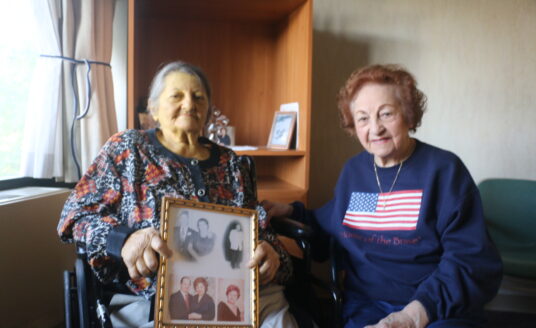It’s no secret that the majority of older adults want to live out their lives in their own homes. Some have even made their children promise to not put them in a nursing home.
Whether this is a good decision is debatable, but one thing is for sure. Our homes often don’t meet the needs of an aging body and mind. However, assisted living facilities offer safety, personalized care, socialization, and enriching activities.
It’s hard to duplicate this environment in a residential home, especially for a family dealing with Alzheimer’s or another form of dementia. Most families underestimate the wrath of Alzheimer’s and find themselves overwhelmed, exhausted and at a loss for how to proceed.
Simplifying the home by removing “extra” choices makes it more functional by eliminating the decision process.
Giving up is not an option, but families need peace of mind and a relaxed atmosphere at home. With the right support and modifications to the home environment, they can often keep their promise of “no nursing home” while protecting the essence of “home.”
The four areas below should be evaluated and adjusted accordingly.
Safety
First and foremost, the home must be safe. A safe home provides peace of mind for the caregiver and promotes independence and individualism for the person with dementia.
Dementia eventually affects a person’s judgment and the ability to recognize dangers. So, much like a new parent “looks through the eyes of their newborn,” so too must the caregiver.
Many things can be done as preventative measures. These include removing trip hazards or other dangers such as medications, chemicals, weapons, or the ability to create fire. Routinely observing how the person with dementia interacts with both the indoor and outdoor environment is essential to identifying any new threats, so the threat can either be removed or modified.
Functionality
For a home to be functional, it must empower a person to complete the task at hand without assistance. This may include adding contrast to the bathroom wall so the toilet is easily recognized, labeling the drawer that contains socks, or eliminating multiple choices.
For instance, having various sets of drinking glasses can confuse the individual with dementia, resulting in frustration. Simplifying the home by removing “extra” choices makes it more functional by eliminating the decision process.
Labeling things is another technique that helps some individuals with dementia. Typically, image-based labels work the best as the ability to comprehend text may be compromised as dementia progresses.
A picture of socks on the sock drawer, or a framed picture of a commode and wash basin outside the bathroom are examples of labels that may help the individual navigate the home.
Stimulating Environment
Possibly one of the most valuable aspects of an assisted living facility, but often overlooked in the residential home, is the ability to routinely provide socialization and enriching activities.
Because a facility has multiple residents and staff, socialization is generally achievable without too much effort. But in the home environment where families are busy with their own lives while doing their best to care for their loved one, it’s quite the opposite situation.
While there might be face-to-face time, it’s often rushed and with a discouraged family member. Having visits from family and friends who are not in the throes of caregiving is important to overcoming this lack of “friendly” socialization.
Typically, this added support, along with activities that make the individual feel purposeful and successful, also helps reduce behavioral issues. In some cases this involves encouraging Mom to help prepare dinner for the family or Dad to repair that broken gate.
Reducing Behavioral Triggers
Identifying and eliminating elements in the home which may cause confusion, agitation, anger, or depression is vital to making the home a relaxed environment.
Attention should be paid to shadows caused by inadequate lighting, busy patterns in wall, floor, or furniture coverings, or even family pictures that cause confusion (who’s that?, they may wonder).
Triggers can occur through any of the senses whether it’s sight, smell, hearing, taste, or touch. Even another person’s emotions can affect the mood of a person with dementia.
If attention is paid to these four areas, it’s possible for the person with dementia and their family to live happily together for many years. There are also professionals who can help adapt the home for someone with unique needs, and programs like Bethesda’s in-home senior care services may help. But sometimes it’s just too much for a family, and assisted living is the best choice for everyone.
Follow this list of tips at TogetherInThis.com to get started.
Caring for Seniors with Dementia in St. Louis
If you need assistance caring for a senior living with dementia, contact Bethesda. Our Care Management program can ensure that your senior loved one gets the care they need at home.
As time progresses, Bethesda’s Memory Care neighborhoods in the St. Louis area provide support to caregivers and families of seniors in a safe and homelike environment. Contact us or schedule a tour to learn more.
By Mike Good for Next Avenue.
© Next Avenue – 2018. All rights reserved.
| Bethesda has a 133-year tradition of providing excellent senior living options, including independent living, assisted living, memory care, and skilled nursing. If you are considering memory care, we welcome you to tour one of our exceptional communities, including Bethesda Dilworth, Bethesda Southgate, and Bethesda Hawthorne Place. Discover the level of care that only a non-profit staffed by highly-trained nurses, therapists, and aids can offer. |



